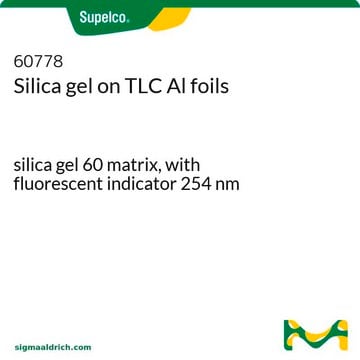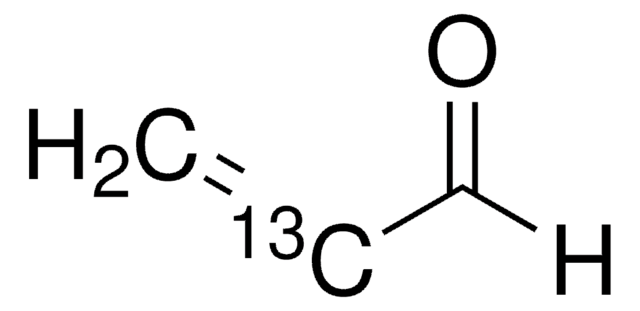64409
Propianaldehído
analytical standard
Sinónimos:
Propanal
About This Item
Productos recomendados
grade
analytical standard
Quality Level
vapor density
2 (vs air)
vapor pressure
18.77 psi ( 55 °C)
4.89 psi ( 20 °C)
assay
≥98.0% (GC)
autoignition temp.
404 °F
shelf life
limited shelf life, expiry date on the label
expl. lim.
17 %, 26 °F
2.6 %, 31 °F
technique(s)
HPLC: suitable
gas chromatography (GC): suitable
refractive index
n20/D 1.360-1.365
n20/D 1.362 (lit.)
bp
46-50 °C (lit.)
mp
−81 °C (lit.)
density
0.805 g/mL at 25 °C (lit.)
application(s)
cleaning products
cosmetics
flavors and fragrances
food and beverages
personal care
format
neat
SMILES string
[H]C(=O)CC
InChI
1S/C3H6O/c1-2-3-4/h3H,2H2,1H3
InChI key
NBBJYMSMWIIQGU-UHFFFAOYSA-N
¿Está buscando productos similares? Visita Guía de comparación de productos
Categorías relacionadas
General description
Find all available reference materials for compounds listed in 10/2011 here
Application
- Food products and cosmetics using gas-chromatography with photo ionization detection (GC-PID).
- Infant formulas using gas chromatography with flame ionization detection (GC-FID).
- Household products using gas chromatography coupled to mass spectrometry (GC-MS).
signalword
Danger
Hazard Classifications
Acute Tox. 4 Inhalation - Acute Tox. 4 Oral - Eye Dam. 1 - Flam. Liq. 2 - Skin Irrit. 2 - STOT SE 3
target_organs
Respiratory system
Storage Class
3 - Flammable liquids
wgk_germany
WGK 1
flash_point_f
-22.0 °F - closed cup
flash_point_c
-30 °C - closed cup
Choose from one of the most recent versions:
¿Ya tiene este producto?
Encuentre la documentación para los productos que ha comprado recientemente en la Biblioteca de documentos.
Los clientes también vieron
Protocolos
-Tolualdehyde; Valeraldehyde; Isovaleraldehyde
Nuestro equipo de científicos tiene experiencia en todas las áreas de investigación: Ciencias de la vida, Ciencia de los materiales, Síntesis química, Cromatografía, Analítica y muchas otras.
Póngase en contacto con el Servicio técnico












